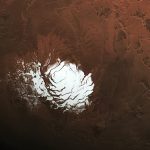Star releasing huge bursts of energy may be 1st of its kind ever discovered0
- From Around the Web, Space
- February 16, 2022
Ultra-long period magnetar is collapsed core of massive star that’s magnetized, rotates slowly

Ultra-long period magnetar is collapsed core of massive star that’s magnetized, rotates slowly

Astronomers have come up with a new estimate for the total number of black holes in the universe, and the number is mind-bogglingly large—40 quintillion. That’s 4 followed by 19 zeros.

Other patches in the multiverse would have, instead, met their ends.

Liquid water previously detected under Mars’ ice-covered south pole is probably just a dusty mirage, according to a new study of the red planet led by researchers at The University of Texas at Austin.
Source: Science News If you hate having your bubble burst, you’ll love these “everlasting” bubbles. While soap bubbles are known for their fragile constitutions, the new bubbles can stick around for more than a year before they pop, scientists report January 18 in Physical Review Fluids. Instead of soap and water, the bubbles are made with water, microparticles
Source: Comicbook.com Witnesses have claimed to have been seeing UFOs for decades, and while sightings seem to happen more and more regularly, there are fewer examples of victims who claim to have been abducted by otherworldly craft, with discovery+ debuting two all-new Shock Docs episodes focusing on some of the most well-known incidents of supposed
Source: Inverse.com NASA’S JAMES WEBB SPACE TELESCOPE (JWST) has finally reached its cosmic perch, and is gearing up for its observations of the ancient universe. On Monday, JWST settled into its final orbit at the second Sun-Earth Lagrange point, or L2. This is a gravitationally stable point where the Sun and Earth’s gravity cancel each other out. The

The January 15 blast triggered atmospheric shock waves and a rare volcanic tsunami

Interest in UFOs continues to grow, both among scientists and government officials.
Mimas, the smallest and innermost of Saturn’s eight main moons, may be warm enough to harbor a global, liquid water ocean beneath a 24-31-km (15-19-mile) thick ice shell, according to a new analysis of data from NASA’s Cassini mission.